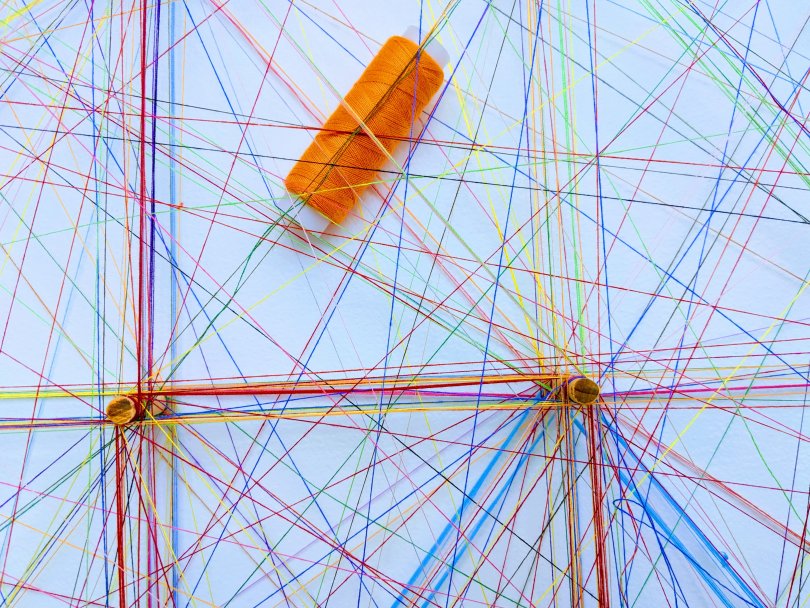
Growth and crisis
Bankruptcy, rising prices, epidemics... In economics, there are many risks. Is insurance really the only tool available to deal with them? According to economists Renaud Bourlès, Yann Bramoullé and Eduardo Perez-Richet, altruism also plays a key role. The ties that bind us to each other form a large network of mutual aid in the event of a major setback.
What if altruism could help us cope with economic shocks by sharing the risks? Whether it's crop failure, raw material shortages or health problems, not everyone is equal when it comes to risk. People are not exposed to the same risk. Not all sectors of activity are affected in the same way. For example, if the weather causes crop failure, farmers will be much more affected than school teachers. In addition, not all individuals have the same realisation of risk. Even if all farmers face similar weather conditions, some may be luckier than others at harvest time. Finally, not all individuals have the same income and therefore the same capacity for bouncing back.
In the face of such crises, the aim is to prevent the inequality gap from widening. To restore the balance, there are mechanisms for sharing risks. This is the principle of insurance, for example. Individuals pool a part of their resources and can use them in a particular way in case of emergency. Apart from conventional mechanisms, individuals also make use of informal transfers. In a previous article, economists Renaud Bourlès, Yann Bramoullé and Eduardo Perez-Richet showed the importance of altruism in income redistribution, especially in countries with an informal economy. But what happens when all individuals face an economic shock? Will they continue to help each other?

Picture by Lucas Favre on Unplash
In many cases, when confronted with economic shocks, people help each other. Wealthier people send money to their relatives in difficulty or support them with loans or everyday expenses. These financial flows are considered informal transfers. They are particularly visible in developing countries, where there are few insurance tools.
But what motivates individuals to give to their relatives? Many economists have answered this question by referring to informal contracts. For them, there are tacit agreements between individuals. These agreements can be based on reciprocity for example. In this case, individuals help each other because they know they can count on their loved ones in case of future hardship. However, it can also be based on social norms - in economics, this is called 'social collateral' - that push individuals to help their neighbours. Nevertheless, in such a configuration, there is a financial limit to giving: beyond this, individuals consider that the link is not important enough to give.
Are reciprocity and social norms the only reasons that lead individuals to give? Economists Renaud Bourlès, Yann Bramoullé and Eduardo Perez-Richet consider that there is an even more basic explanation: altruism. People help each other because they care about each other. In this model, there is no cost-benefit calculation, no future return on investment, no tacit contract. It is only the bonds of friendship, family or compassion that drive people to give.
To analyse the effects of altruism on risk sharing, economists construct a network model. Here, it is not a question of binary relationships where help is given between two people, but rather of a real network where each individual is connected to several people. As in life, we are constantly connected to those closest to us: some know each other, some don't, we can help several people but not all at once, and we can both receive and give at the same time.
To measure the impact of altruism in this model, the economists look at the structure of the network and the degree of altruism. The structure of the network varies according to the number of links and the way they connect. For risk sharing to work, the network must be fully connected, otherwise several separate groups are formed. In this case, if a shock hits one of the communities, all members will be in need and none will be able to help the others. In addition, the individuals must be sufficiently heterogeneous: they must have different risk realisations in the face of the shock. In other words, in order to help each other, there must be both rich and poor, but also lucky and unlucky people.
The degree of altruism measures the strength of the bond itself. Is the bond strong enough to keep people helping each other, even when things go wrong? In the model, the degree of altruism varies between 0 and 1. The closer it is to 1, the more 'perfect' the altruism is considered to be. In this case, the two linked individuals consider themselves to be equivalent: their well-being is equally important and they therefore readily help each other.

A set of coloured threads forming networks with pins to illustrate interaction nodes.
In the model, the greater the shock, the greater the insurance role of altruism. In other informal insurance models, such as 'social collateral', help stops when the need exceeds a certain amount. In contrast, altruistic ties generate more help as and when individuals need it. Altruism does therefore act as insurance, when the ties are strong and the network is connected. Economists add that if the network is fragmented, it only takes one connection between two individuals for redistribution to occur between groups. This connection acts as a 'bridge' through which money transfers from the better-off to the less well-off.
Putting altruism at the centre of the debate allows us to observe that the state and private insurance are not the only tools we can rely on. Indeed, where the state is absent, such as in developing countries, the importance of altruism is even more apparent.
The network model proposed by authors Renaud Bourlès, Yann Bramoullé and Eduardo Perez-Richet was applied in The Gambia by economists Simon Heß and Marcel Fafchamps. They analysed the interactions of 56 Gambian villages. By taking into account all the households involved, they were able to reconstruct the entire network and its transfers. They concluded that 68% of village families are both donors and recipients. Altruism is therefore an integral part of economic exchanges between families and helps to resolve the economic shocks they face.
Such results invite us to value the importance of human links in daily well-being. Altruism is part of the economy: it leads us to give when our economic situation allows it, and to receive when we need it.